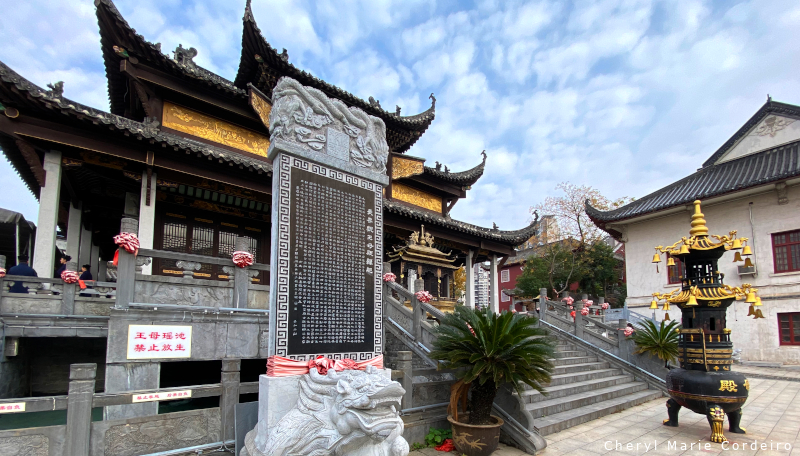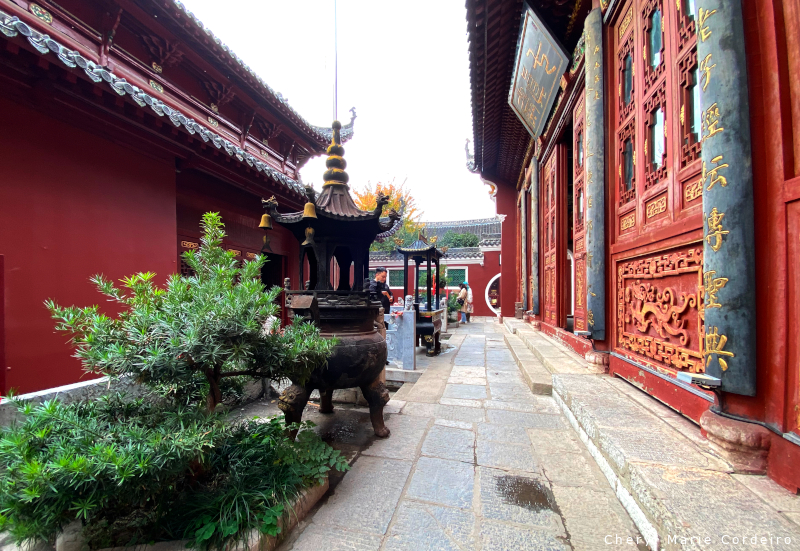
Changchun Temple, Wuhan, China.
Text & Photo © CM Cordeiro, E. Sindhøj 2025
Changchun Temple in Wuhan is undeniably one of the city’s most scenic spots—a harmonious fusion of history, spirituality, and natural beauty. Located on the southern slope of Double Peak Hill in the Wuchang District, this Taoist temple holds a significant place in Chinese history and culture. It is revered as one of the ten famous Taoist sanctuaries and a blessed place south of the Yangtze River.
A Historical and Cultural Gem
Changchun Temple is dedicated to Quanzhen Taoism, named after Qiu Chuji (Chang Chunzi), a disciple of Wang Chongyang, the founder of the Quanzhen sect. Built during the Yuan Dynasty, it honors Qiu’s legacy as one of the seven northern immortals and the founder of the Dragon Gate sect. Historical records highlight his remarkable diplomacy in averting war through peaceful negotiation when the Yuan army marched southward.
Over the centuries, Changchun Temple has witnessed cycles of destruction and renewal. It played a pivotal role during the Taiping Rebellion, serving as a headquarters for the Taiping Army. However, the temple suffered significant damage due to the Taiping Army’s Christian-inspired rejection of Taoism and Buddhism, which they deemed heretical. Later, in 1864, restoration efforts led by Master He Hechun, with support from imperial officials, restored the temple to its former grandeur.
The temple also has ties to the Revolution of 1911, when it was used as a base for revolutionary activities. In 1926, the Northern Expedition Army, led by Ye Ting, established its headquarters in the temple’s San Huang Hall. This revolutionary chapter adds another layer to the temple’s rich history, making it not only a religious site but also a witness to China’s political transformations.
Architectural and Spiritual Splendor
Changchun Temple is a first-level protected cultural relic in Wuhan and a renowned tourist destination. Its architecture is a harmonious blend of natural elegance and Taoist symbolism. The intricate carvings, tranquil courtyards, and koi ponds reflect a serene beauty that captivates visitors. The temple houses notable structures, including:
- Hall of Three Purities (三清殿): Dedicated to the highest Taoist deities, it serves as the spiritual heart of the temple.
- Hall of the Jade Emperor: A space for prayers of blessings and protection.
- Hall of Guanyin (Goddess of Mercy): A peaceful retreat for compassion and guidance.
The temple also preserves a Ming Dynasty edition of the Orthodox Taoist Scriptures, one of only four such collections in the country.
Cultural Significance and Festivals
The temple is vibrant with cultural traditions, especially during the annual Qiuzu Temple Fair on the 19th day of the first lunar month. Locally known as the “Spring Greeting Festival” or the “Nine Swallows Festival,” this grand event celebrates Chang Chunzi’s birthday with rituals, music, and poetry. Historical poets like Kong Shangren and Wang Boxin have immortalized these celebrations in their works.
A Modern-Day Cultural Hub
Visiting Changchun Temple, I found it alive with activity. Worshippers chanted prayers in one corner, their voices resonating through the temple grounds. Meanwhile, photographers and vloggers wandered the courtyards, capturing its timeless charm. The juxtaposition of sacred rituals and modern-day creativity creates a dynamic atmosphere unique to this historic site.
Despite the bustling energy, moments of quiet reflection are possible. The temple’s thoughtful design offers tranquil spaces away from the crowds. Shaded walkways, secluded courtyards, and serene halls provide the perfect environment for meditation and introspection.
Reflections on Changchun Temple
Changchun Temple is a testament to Wuhan’s ability to balance its ancient traditions with modern vibrancy. While it has become a popular destination for photographers and social media enthusiasts, its spiritual essence remains intact. For those willing to look beyond the surface, the temple offers a profound connection to centuries-old Taoist teachings and history.
As I left the temple grounds, I carried with me a renewed sense of calm and reflection. Changchun Temple’s timeless wisdom and enduring charm remind us that moments of peace and enlightenment can be found, even in the heart of a bustling metropolis.



